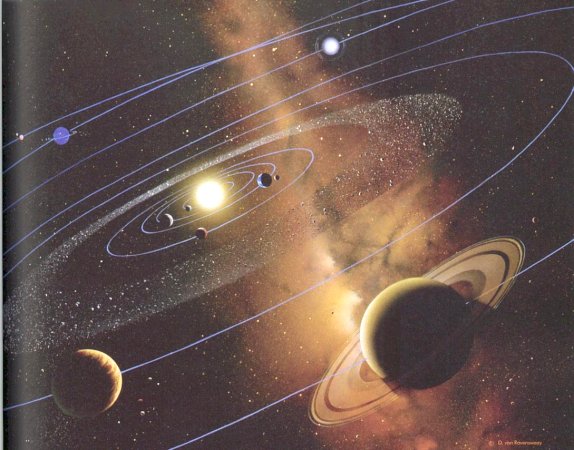Life may be abundant in Universe in form of super-Earths
 Washington, Dec 16 : A new model has revealed that one-third of all solar systems may contain super-Earths, which indicates that life may be abundant in the Universe.
Washington, Dec 16 : A new model has revealed that one-third of all solar systems may contain super-Earths, which indicates that life may be abundant in the Universe.
Cold "Super-Earths", which are giant, "snowball" planets that astronomers have spied on the outskirts of faraway solar systems, could potentially support some kind of life, they have found.
"We know there are a lot of super-Earths out there, and the next generation of telescopes will be even better at spotting them," said Scott Gaudi, assistant professor of astronomy at Ohio State University.
Despite the name, a super-Earth has little in common with the Earth that we know, other than the fact it is has a solid surface.
A super-Earth is covered with ice, and may have a substantial atmosphere - perhaps much thicker than the Earth's.
Yet Gaudi joined with Eric Gaidos of the University of Hawaii and Sara Seager of the Massachusetts Institute of Technology (MIT) to model whether such planets might harbor a liquid ocean that could support life, and whether they might be detectable from Earth.
"It turns out that if super-Earths are young enough, massive enough, or have a thick atmosphere, they could have liquid water under the ice or even on the surface," Gaudi said. "And we will almost certainly be able to detect these habitable planets if they exist," he added.
Gaidos and Seager found that very big super-Earths, ones around 10 times the mass of Earth, could retain enough heat from their formation to form a liquid ocean beneath the ice, even though those planets would be located some five times farther from their star than the Earth is from its sun.
Rather than looking for warm planets like Earth that happened to acquire water, Gaudi and his colleagues decided to look at cold super-Earths that formed with water already in place.
They examined the likelihood that some internal heat source might enable liquid water to form under the ice.
As Gaidos and Seager modeled scenarios for heating the interior of super-Earths, Gaudi modeled whether the planets they hypothesized would be detectable.
Gaidos and Seager found that very big super-Earths, ones around 10 times the mass of Earth, could retain enough heat from their formation to form a liquid ocean beneath the ice, even though those planets would be located some five times farther from their star than the Earth is from its sun.
Gaudi determined that such planets would be detectable. The most promising technique for finding super-Earths is gravitational microlensing. (ANI)